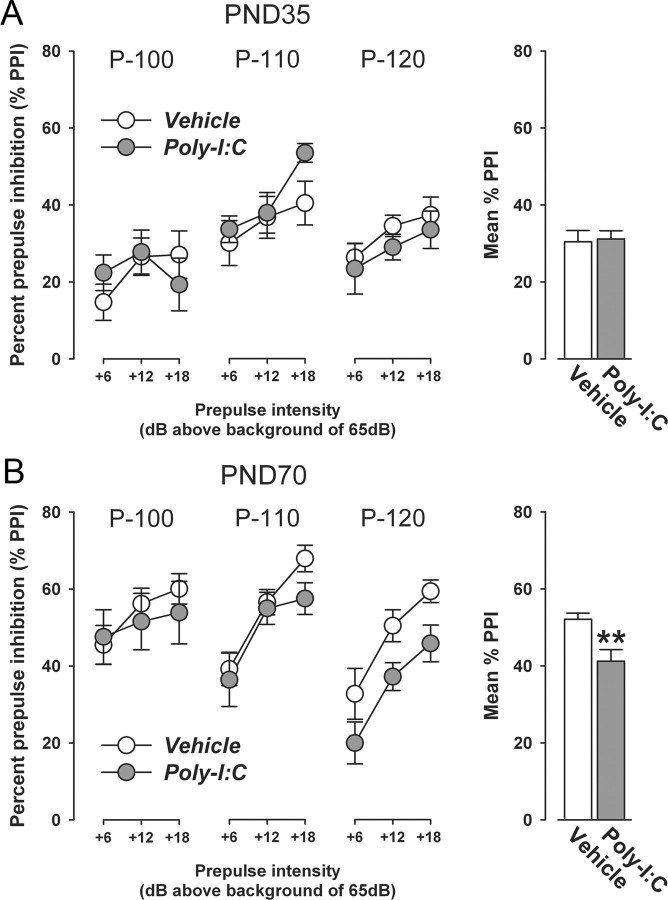Figure 10.
Postpubertal emergence of sensorimotor gating deficits following prenatal immune activation. The effects of prenatal Poly-I:C-induced immune challenge, relative to prenatal vehicle treatment, on sensorimotor gating in peripuberty (PND35) and adulthood (PND70) were investigated using the paradigm of PPI of the acoustic startle reflex. The line plots show %PPI as a function of the three intensities of prepulse (71, 77, and 83 dBA, which corresponded to 6, 12, and 18 dBA above background white noise, respectively) and of the three intensities of pulse (P-100, P-110, and P-120, which corresponded to pulse intensities of 100, 110, and 120 dBA, respectively). The bar plots depict mean %PPI across all prepulse and pulse levels used. A, No significant differences in PPI were apparent between peripubertal offspring born to Poly-I:C- and vehicle-treated mothers. The numbers of offspring included were N(vehicle) = 14, N(Poly-I:C) = 14. B, However, a significant overall reduction in %PPI emerged in prenatally Poly-I:C-treated offspring at adult age relative to adult control offspring. The PPI-disrupting effects of prenatal Poly-I:C exposure seemed most pronounced in conditions, in which the highest pulse stimulus (P-120) was used. **p < 0.01 represents the significant main effect of prenatal treatment in the 2 × 3 × 3 (prenatal treatment × prepulse level × pulse level) ANOVA of %PPI (F(1,26) = 11.01). The numbers of offspring included were N(vehicle) = 15, N(Poly-I:C) = 13. All values in A and B are means ± SEM.

